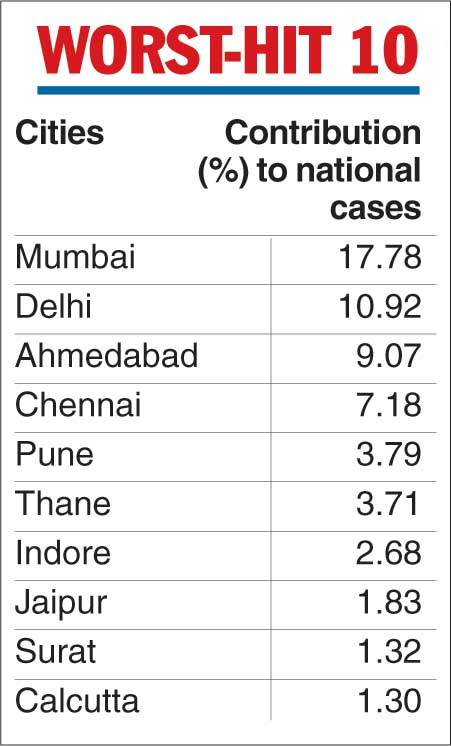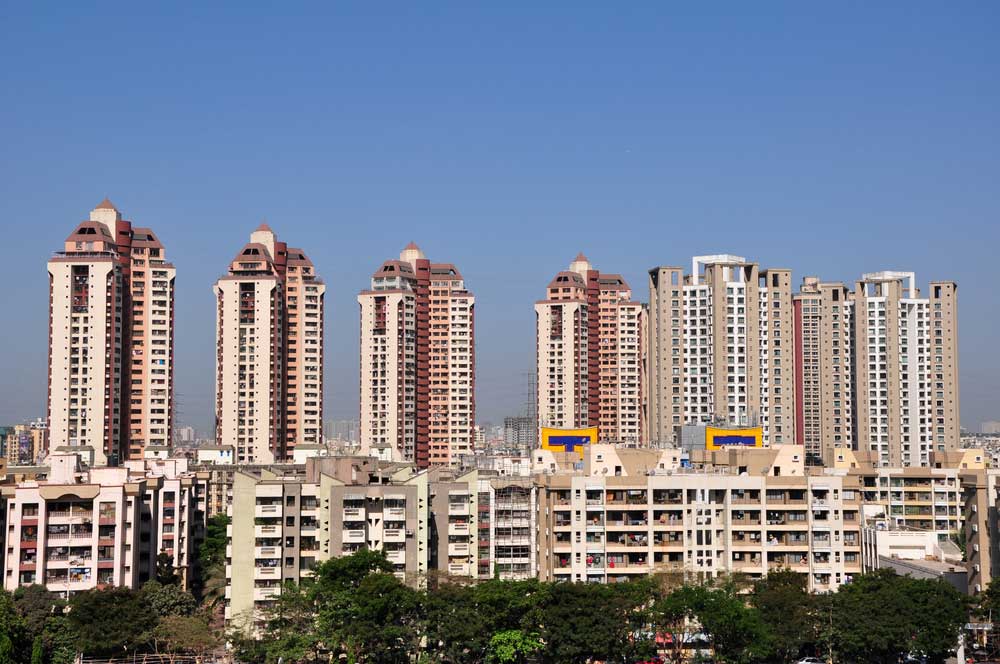The Union health ministry on Saturday released guidelines on how overcrowded urban settlements should seek to contain the new coronavirus disease although 18 large cities, including Calcutta, already make up around 68 per cent of India’s Covid-19 cases.
Some public health experts expressed surprise at the timing of the guidelines.
The experts asserted that densely populated urban settlements should have been viewed as potential high-risk zones for rapid spread of the infection and people there coached how to respond weeks ago.
The guidelines intended for people living in overcrowded localities with large numbers of people in small living spaces recommend the use of community volunteers to promote physical distancing at community water points, shops, community toilets and healthcare centres.

They also recommend frequent hand-washing, respiratory etiquette and even sleeping rules, calling on people living in crammed homes to sleep with the head of one person facing the legs of another.
The guidelines also call for identifying nearby schools or stadiums as possible quarantine zones and on authorities to consider moving high-risk populations — such as the elderly — into such alternative, temporary accommodation.
“Extremely crowded urban living quarters should have been prioritised for interventions early, before the epidemic spread the way it has,” said Oommen John, a public health specialist at The George Institute for Global Health, New Delhi. “It’s surprising to see the guidelines out now.”
Eighteen cities, each with more than 500 patients, account for 68 per cent of the country’s Covid-19 cases, Amitabh Kant, the chief executive officer of the NITI Aayog, the government’s apex think tank, posted on Twitter on Saturday.
Mumbai makes up 18 per cent of the cases, Delhi another 11 per cent and Ahmedabad 9 per cent. Calcutta is 10th on the list with 1.3 per cent of the country’s total Covid-19 cases. (See chart)
The health ministry on Saturday recorded 3,970 new patients, raising the total number of cases to 85,940, among whom 53,035 patients are in hospitals and 2,752 have died. More than 30,150 patients have recovered.
The ministry said 30 municipal areas across 12 states and Union Territories — Maharashtra, Tamil Nadu, Gujarat, Delhi, Madhya Pradesh, Bengal, Rajasthan, Uttar Pradesh, Telangana, Andhra Pradesh, Punjab and Odisha — account for 80 per cent of the country’s total Covid-19 cases.
Health secretary Preeti Sudan held a meeting with municipal officers from these sites on Saturday, discussing strategies to contain the outbreaks there as well as efforts to address special challenges associated with overcrowded urban areas.
The health officials discussed “possible root causes and recommendations” for high case fatality rates, high doubling times of the infection and relatively high proportions of people testing positive in the containment zones, the ministry said, without specifying the root causes or recommendations.











